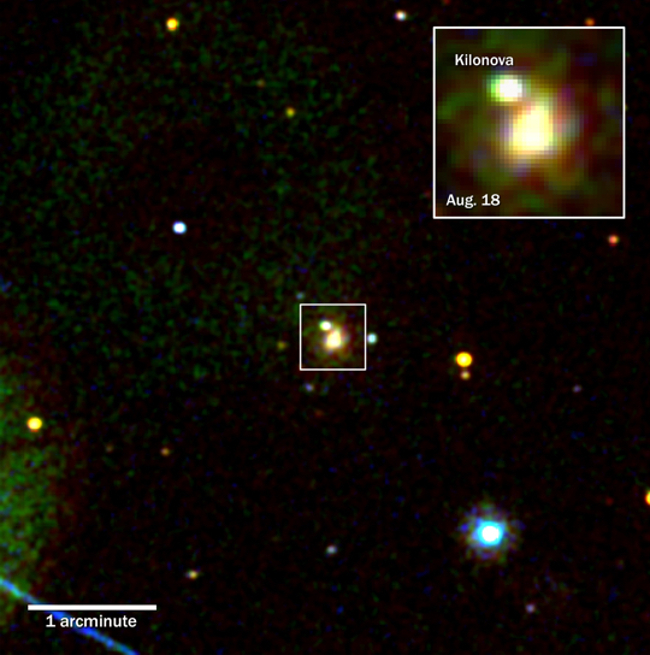
 Credit: NASA/Swift
Credit: NASA/Swift
Blue Kilonova
The gravitational wave burst GW 170817 was first reported by the Fermi Gamma-ray Space Telescope as a Gamma-ray burst, GRB170817A, and thereby ushered in the era of "multi-messenger" astrophysics. This event, we know now, was due to a merger of two neutron stars, an explosion astronomers call a "kilonova" since it's about 1000 times more powerful than most novae but less powerful than most supernovae. Once detected, the kilonova became the target of an international campaign of observations, involving ground-based and space-based telescopes. The Swift Gamma-ray burst telescope joined the hunt within one hour of the detection of the GWB. Initially, the location of the burst was not known very precisely, so Swift started to observe a wide region around the region of the Gamma-ray burst. A candidate optical burst in the galaxy NGC 4993 was first reported by the Swopes Supernova Survey just half a day after the GW event, and, about 2 hours after this notice, Swift observed it too. Swift's Ultraviolet/Optical Telescope (UVOT) detected a transient source of ultraviolet emission from the optical candidate, making this the first observation of UV emission from a kilonova. Surprisingly, there was no X-ray emission seen in Swift's X-ray Telescope. The detection of UV emission with no immediate X-ray emission showed that most of the energy of the explosion emerged in a narrow jet, and that our line of sight was probably inclined by about 30 degrees or so to this beam. The fading UV emission seen by Swift suggests that it arises in a massive "wind" produced by the explosion, moving at a significant fraction of the speed of light.
Published: October 30, 2017
<
HEA Dictionary ● Archive
● Search HEAPOW
● Other Languages
● HEAPOW on Facebook
● Download all Images
● Education ● HEAD
>

Each week the HEASARC
brings you new, exciting and beautiful images from X-ray and Gamma ray
astronomy. Check back each week and be sure to check out the HEAPOW archive!
Page Author: Dr. Michael F. Corcoran
Last modified Tuesday, 27-Feb-2024 10:15:19 EST


